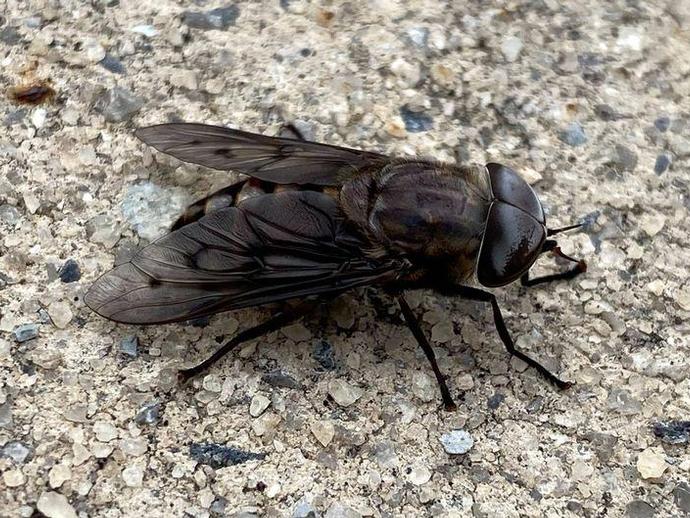September 9, 2021
Ben here with the Thursday edition of #BenInNature presented by our friends at Carter Bank & Trust!
This is the horse fly Tabanus sulcifrons, and like all horse flies in the
genus Tabanus, this is not a critter you want to see landing on your bare skin!
Horse flies are found nearly all over the world, except for some islands and the polar regions. They are active during the day and tend to prefer flying on sunny days. Adult horse flies, believe it or not, feed on flower nectar. However, as anyone who has ever visited a swimming pool on a bright summer day can attest, they aren't afraid to bite humans and lap up our blood!
While males don't drink blood, female horse flies are "anautogenous," which means they require a blood meal before they're able to reproduce. The female will usually land on a large mammal -- cattle, horses, deer, me -- and use the sharp stylets in her mouthparts to slice open the mammal's skin, inject the wound with an anticoagulant, and then begin lapping up the blood. Unlike mosquitoes, this bite is immediately painful; since they usually feed on large animals that lack the ability to dislodge the fly, there's no incentive for the flies to evolve a less painful bite. The female horse fly will spend almost a week digesting the blood meal, at which point she will be able to lay her eggs.
Unfortunately, horse fly bites can pass on diseases, not only to animals but also to humans -- everything from roundworm infections to tularemia. If you do get bitten by a horse fly, the best thing to do is wash the site and apply a cold compress followed by an antihistamine cream. Try not to scratch the bite and it should feel much better in a couple hours.
Thank you to VMNH Executive Director Dr. Joe Keiper for the species identification!
ABOUT #BenInNature
Social distancing can be difficult, but it presents a great opportunity to become reacquainted with nature. In this series of posts, Administrator of Science Ben Williams ventures outdoors to record a snapshot of the unique sights that can be found in the natural world. New updates are posted Monday - Friday, with previous posts highlighted on the weekends. This series of posts is made possible thanks to the support of VMNH Corporate Partner Carter Bank & Trust (www.cbtcares.com).
NATURE PHOTO IDENTIFICATIONS
If you discover something in nature that you would like help identifying, be sure to message us right here on Facebook with a picture (please include location and date of picture) and we'll have our experts help you identify it!

 Hours & Admissions
Hours & Admissions Directions
Directions

